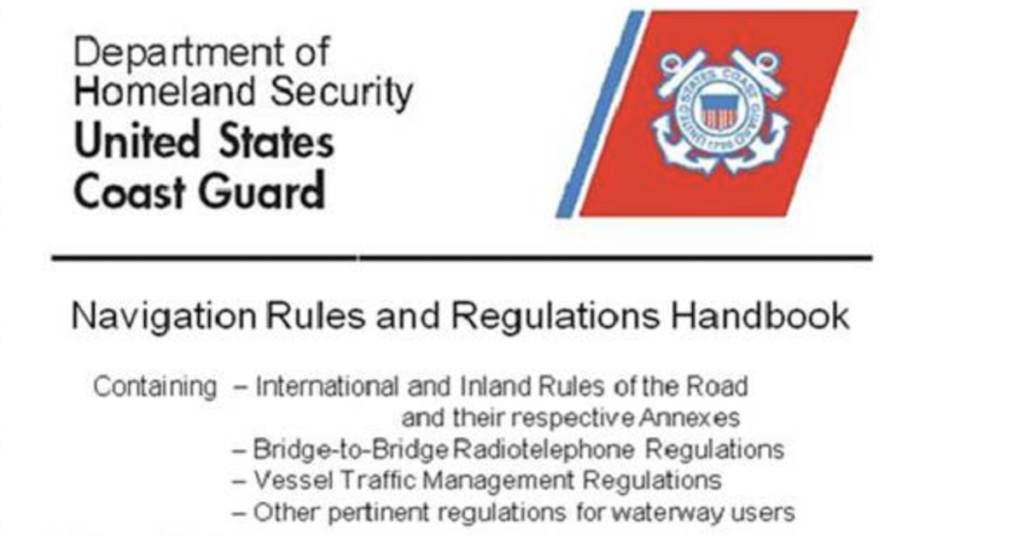If your boat has radar, are you required to have it on while you’re under way? The answer to a question I recently got on my YouTube channel.
I just returned from a five-week trip in my “land yacht,” my Ford F350 pickup truck with a 2007 Lance 950 truck camper on top. Before I bought my boat, I went south every winter in this rig, sometimes living aboard for up to three months in the Arizona desert. For the previous two winters, I was on my boat on the Great Loop and you can read about most of my travels in this blog (sooner or later; I’m still filling in gaps). But this winter I decided to take a break from boating and I drove south again. I’m sure I’ll blog more about that in my personal blog, An Eclectic Mind. I’m back now, in time to visit the Seattle Boat Show this coming week.
While I was gone, I managed to release a video or two on my YouTube channel and write a few posts here. (It’s hard to work on creating fresh content when I’m traveling.) This morning, while having my morning coffee, I checked in on YouTube channel comments and found this one:
I thought if a vessel is equipped with radar, Nav Rule 7 says it must be turned on when underway, same with VHF. ???????
The comment was on the video of my journey from Coinjock to Great Bridge. In that video, I got into some fog and used my radar for a while.
Want to see all the rules a mariner should know before casting off? The Coast Guard’s Web site has them all on one page: “USCG Amalgamated Navigation Rules International & U.S. Inland.” This page includes not only the inland waters and international Rules of the Road but a bunch of other important rules, like the one about radio requirements quoted below.
The viewer was referring to Rule 7 of the COLREGS “Rules of the Road.” These are the rules that mariners are expected to know and follow. As an OUPV Boat Captain, I was taught and tested on these rules and I have a copy of them on my boat, as required by the Coast Guard.
Rules 7 and 5
Here’s the text of rule 7; I added the boldface:
Rule 7 – Risk of Collision
(a) Every vessel shall use all available means appropriate to the prevailing circumstances and conditions to determine if risk of collision exists. If there is any doubt such risk shall be deemed to exist.
(b) Proper use shall be made of radar equipment if fitted and operational, including long-range scanning to obtain early warning of risk of collision and radar plotting or equivalent systematic observation of detected objects.
(c) Assumptions shall not be made on the basis of scanty information, especially scanty radar information.
(d) In determining if risk of collision exists the following considerations shall be among those taken into account:
(i) Such risk shall be deemed to exist if the compass bearing of an approaching vessel does not appreciably change.
(ii) Such risk may sometimes exist even when an appreciable bearing change is evident, particularly when approaching a very large vessel or a tow or when approaching a vessel at close range.
My boat has radar but I do not keep it turned on when underway. I’ll spin it up and display its sweep on one of my chart plotters when I’m in limited visibility, like fog, heavy rain, or darkness, but on a nice, clear day it’s turned off. The spinning radar inside its dome, as a movable part, is a wear and tear item I prefer not to keep running when it is not needed.
And that’s the question: is it needed? Is it required to be turned on? The viewer seemed to think it was.
But let’s look again at Rule 7 and the boldfaced text. First, Rule 7 is all about reducing the risk of collision. It’s right in the name of the rule. Radar is a tool that provides limited information about potential risks of collision. But on a clear day with 5+ miles of visibility, is radar going to show me anything my eyes won’t? And won’t my eyes tell me exactly what the target is — another boat, a buoy, a rock jutting out of the water — instead of a red blob that may or may not appear exactly where the hazard is?
In other words, why should I be looking inside at a chartplotter image of a potential hazard that appears as a blob when I can clearly see the hazard for myself with my own eyes by just looking out the window — as I should be doing?
Remember Rule 5:
Rule 5 – Lookout
Every vessel shall at all times maintain a proper look-out by sight and hearing as well as by all available means appropriate in the prevailing circumstances and conditions so as to make a full appraisal of the situation and of the risk of collision.
Is the use of radar on a clear day with good visibility “appropriate to the prevailing circumstances and conditions”? Would that be “proper use” of radar? I argue that it is not.
So what if I’m on a narrow, winding body of water such as Tenn-Tom and other parts of the inland waterways? I can’t see what’s around the next bend in the river. Even radar won’t show me what’s around the next bend because it can’t “see” what’s around the next bend either. In that case, AIS will serve me better — and that’s not even discussed in the Rules of the Road!
(The school I teach for recommends that AIS be turned on at all times to see other traffic. While I agree that it should always be turned on, I can argue that because not all boats have AIS, it should not be relied on to identify potential collision hazards. But that’s a topic for another blog post.)
Remember, Rule 7 is not about radar. It’s about using tools to reduce the risk of collision. Radar is one of the tools we have, as is AIS, but neither one of them are better than a pair of eyes when visibility is good.
That’s my take on Rule 7 as it applies to pleasure craft like the ones I operate. COLREGS, like the FAA’s FARs, are open to interpretation. But nowhere in Rule 7 does it say that radar must be turned on.
And the VHF Radio?
As for VHF radio, that’s not in the Rules of the Road, but it is covered in 33 CFR 26, “Vessel Bridge-to-Bridge Radiotelephone regulations.” Paragraph 3 specifies who is required to have a “radiotelephone,” which is basically a VHF radio:
3. Radiotelephone required.
(a) Unless an exemption is granted under §9 and except as provided in §(a)(4) , this part applies to:
(1) Every power-driven vessel of 20 meters or over in length while navigating;
(2) Every vessel of 100 gross tons and upward carrying one or more passengers for hire while navigating;
(3) Every towing vessel of 26 feet or over in length while navigating; and
(4) Every dredge and floating plant engaged in or near a channel or fairway in operations likely to restrict or affect navigation of other vessels except for an unmanned or intermittently manned floating plant under the control of a dredge.
Does your boat fall into one of these categories? My 32-foot LOA Ranger Tug R-29 CB does not. That means that legally, I am not required to have a radio on board (unless I engage in towing). Does that mean I won’t carry a radio and turn it on when I’m under way? Hell no! A radio is an important means of communication with other vessels and the Coast Guard. I have one at each helm and a handheld as a backup.
My point is this: just because something isn’t required doesn’t mean we shouldn’t have/use it. Common sense should prevail.
Got Something to Add?
If you have something to add to this discussion, please use the comments feature to speak your mind. I welcome other points of view, as well as first-hand experiences. We learn by sharing — which is what this blog is all about.


